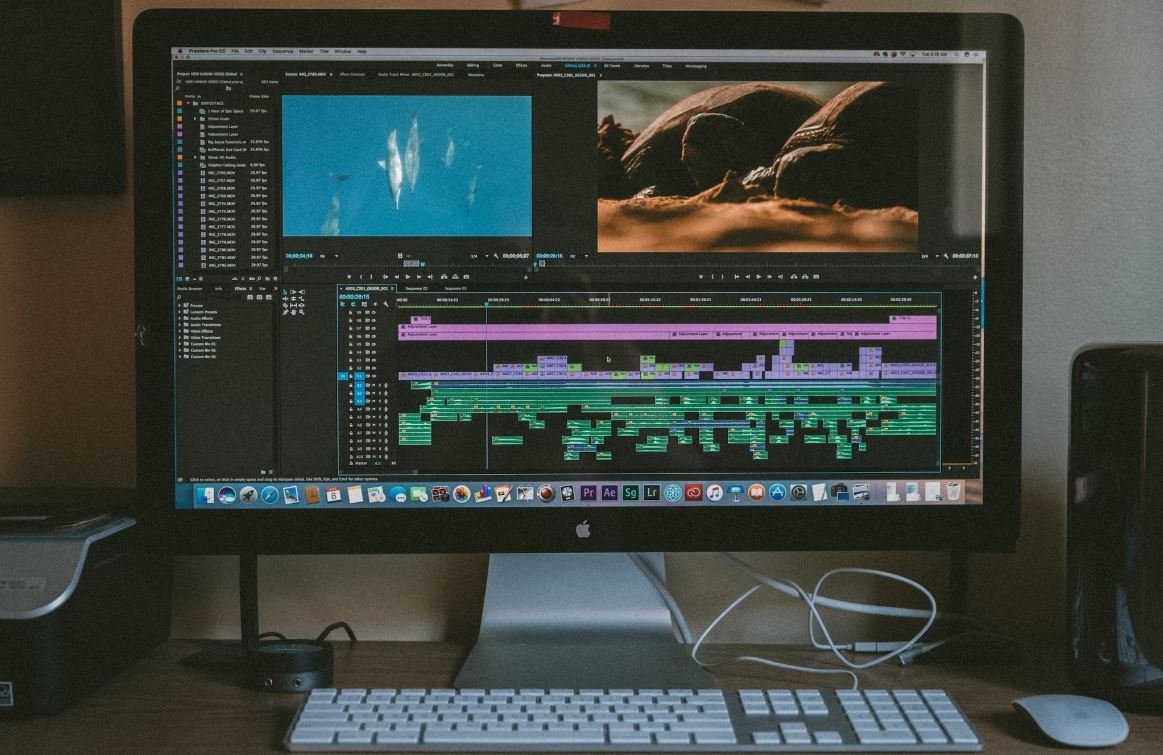Footage Define
Footage refers to the amount of recorded or captured material in audiovisual media. It is often used to describe the length of a video, film, or recording. Understanding the concept of footage can be beneficial for filmmakers, video editors, and anyone working in the media industry.
Key Takeaways:
- Footage refers to the recorded or captured material in audiovisual media.
- It is commonly used to describe the length of a video, film, or recording.
- Footage is essential for filmmakers, video editors, and media professionals.
What is Footage?
Footage is an essential term in the media industry that refers to the recorded or captured material in audiovisual media. It can encompass various types of media, including videos, films, documentaries, commercials, and more. The term is often used to describe the length or duration of a particular video or recording. *Understanding the concept of footage is crucial to determine the amount of material available for editing and producing a final product.*
Types of Footage
Footage can be categorized into different types depending on the context and purpose of the recording. Some common types of footage include:
- B-roll footage: Additional or supplementary footage used to illustrate or support the main content. It is often shot separately from the primary footage.
- Stock footage: Pre-recorded footage that is licensed for use in various productions. It eliminates the need to shoot specific scenes, saving time and resources.
- Archival footage: Historical or old footage that is used to provide context or background information. It can be sourced from various archives or collections.
Importance of Footage in Filmmaking
Footage plays a crucial role in the process of filmmaking as it provides the raw material that can be edited and crafted into a final cohesive product. *By capturing the required footage, filmmakers can bring their creative vision to life.* Some key reasons why footage is essential in filmmaking include:
- Allows for creative storytelling by capturing different angles, perspectives, and scenes.
- Provides a visual representation of the script, enabling the director to guide the actors and crew.
- Allows for post-production editing, where footage can be arranged, trimmed, and combined to create the desired narrative.
Table 1 – Comparison of Different Footage Types
| Footage Type | Description |
|---|---|
| B-roll footage | Additional or supplementary footage used to support the main content, shot separately. |
| Stock footage | Pre-recorded footage licensed for use in various productions, saving time and resources. |
| Archival footage | Historical or old footage used to provide context or background information, sourced from different archives or collections. |
Table 2 – Common Uses of Footage in Media Production
| Usage | Description |
|---|---|
| Documentaries | Footage is used to visually support the narration and showcase real-life events or subjects. |
| Commercials | Footage is employed to promote products or services effectively and capture the attention of the target audience. |
| Films | Footage is the foundation on which the story is built, allowing the director to create visual sequences and convey emotions. |
Managing and Organizing Footage
Effectively managing and organizing footage is crucial, especially when dealing with large amounts of material. A well-structured organization system ensures that the right footage can be easily located and accessed when needed. Here are some tips for managing and organizing footage:
- Use clear and descriptive file names to provide context and information about the footage.
- Create logical folder structures and use subfolders to categorize footage based on themes, locations, or dates.
- Invest in a quality media management software that allows for easy searching, tagging, and sorting of footage.
Table 3 – Benefits of Organizing Footage
| Benefit | Description |
|---|---|
| Faster access | Organized footage allows for quicker retrieval and reduces time spent searching for specific clips. |
| Better collaboration | Well-organized footage enables effective collaboration among team members, ensuring everyone can easily find and work on the required material. |
| Improved workflow | An organized system ensures a smoother workflow by eliminating confusion and promoting efficiency. |
Footage is a fundamental element of audiovisual media production that provides the raw material for crafting engaging and creative content. Understanding the various types of footage, its significance in filmmaking, and effective management strategies can help professionals in the media industry produce high-quality and captivating visual experiences.

Common Misconceptions
Paragraph 1: The Definition of Footage
One common misconception people have about footage is its definition. Many believe that footage refers only to video recordings. However, footage actually refers to any recorded material, including both video and audio, captured by a camera or other recording device.
- Footage includes both video and audio recordings
- It can be captured through various devices
- Footage can range from homemade videos to professional recordings
Paragraph 2: Limitations of Footage
Another misconception is that footage is always a complete and accurate representation of an event. In reality, footage can be limited and biased. It captures only a specific perspective and may not provide the full context or all relevant details of an incident.
- Footage may lack context and additional information
- It can be influenced by the perspective of the recorder
- Footage may be edited or manipulated
Paragraph 3: Authenticity of Footage
Many people assume that footage is always authentic and trustworthy. However, this is not always the case. With advancements in technology, it has become easier to manipulate and create fake footage. People should be aware that footage can be altered or misrepresented, posing challenges when evaluating its authenticity.
- Footage can be manipulated or altered using software
- There are challenges in distinguishing real from fake footage
- Verification methods are necessary to determine authenticity
Paragraph 4: Ownership and Rights of Footage
There is a misconception regarding the ownership and rights of footage. Many assume that anyone can use and share any footage found on the internet, without considering copyright laws and intellectual property rights. It’s crucial to understand that footage creators and owners have legal rights and their permission may be required for its use.
- Creators of footage hold copyright and intellectual property rights
- Permission may be required for using or sharing the footage
- Unlawful usage can lead to legal consequences
Paragraph 5: Footage as Objective Evidence
Some people mistakenly perceive footage as objective evidence that always provides an unbiased account of events. However, footage can still be subjective and have inherent biases. It is important to critically analyze and consider multiple perspectives when interpreting footage to avoid drawing inaccurate conclusions.
- Footage may contain unintentional biases of the recorder
- Multiple perspectives should be considered when analyzing footage
- Critical thinking and evaluation are necessary to draw accurate conclusions

The Evolution of Video Footage: From Analog to Digital
Video footage has come a long way since its early days. This table shows a comparison between analog and digital video formats.
| Format | Analog | Digital |
|---|---|---|
| Quality | Standard definition | High definition |
| Resolution | 480p | 1080p |
| Storage | Tapes or reels | Hard drives or cloud |
| Editing | Analog editing suites | Computer-based editing software |
The Advantages of Shooting in Slow Motion
Slow motion footage can add a unique cinematic effect to videos. In this table, we explore some benefits of shooting in slow motion.
| Advantage | Description |
|---|---|
| Dramatic effect | Enhances emotions and actions |
| Highlight details | Captures every frame in detail |
| Create suspense | Builds tension and anticipation |
| Show motion blur | Visualize movement in a unique way |
The Rise of Mobile Video Consumption
The ubiquity of smartphones has led to an increase in video consumption on mobile devices. Check out these eye-opening statistics.
| Stat | Percent |
|---|---|
| Mobile video share of global internet traffic | 62% |
| Time spent watching videos on smartphones | 33% |
| Mobile video ad spend growth | 49% |
The Role of Video Marketing in Business
Video marketing has become an essential strategy for businesses to engage with audiences. Explore its benefits in this table.
| Benefit | Description |
|---|---|
| Increased engagement | Videos attract and hold attention |
| Boosted conversions | Video content leads to more sales |
| Improved SEO | Videos help with search engine rankings |
The World’s Most Viewed YouTube Videos
YouTube is home to numerous viral videos that have garnered billions of views. Here are some of the most viewed YouTube videos.
| Video | Views |
|---|---|
| “Baby Shark Dance” | 10.4 billion |
| “Despacito” | 7.4 billion |
| “Shape of You” | 5.5 billion |
The Relationship Between Video Length and Audience Retention
Understanding the correlation between video length and audience retention is crucial for content creators. This table illustrates this relationship.
| Video Duration | Retention Rate |
|---|---|
| 0-1 minute | 80% |
| 1-3 minutes | 60% |
| 3-5 minutes | 40% |
| 5+ minutes | 20% |
The Impact of Virtual Reality (VR) Videos
Virtual Reality (VR) videos offer immersive experiences, revolutionizing various sectors. Let’s examine their impact.
| Sector | Impact of VR Videos |
|---|---|
| Tourism | Virtual tours increase travel bookings |
| Education | Enhances interactive learning experiences |
| Healthcare | Simulates medical procedures for training |
The Importance of Video Accessibility
Ensuring accessibility in videos is essential for inclusivity. Here’s how accessibility features benefit different user groups.
| User Group | Accessible Features |
|---|---|
| Deaf or Hard of Hearing | Closed captions and transcripts |
| Visually Impaired | Audio descriptions and screen readers |
| Foreign Language Speakers | Subtitles and translated captions |
The Impact of Video Streaming Services
Video streaming services have disrupted the entertainment industry. Take a look at some of the key players and their subscriber counts.
| Service | Subscribers (in millions) |
|---|---|
| Netflix | 207.6 |
| Amazon Prime Video | 175 |
| Disney+ | 116 |
From the evolution of video formats to the rise of mobile video consumption, it is evident that video footage plays a significant role in today’s society. The benefits of shooting in slow motion, utilizing video marketing, and creating accessible content further contribute to the impact of videos. As technology continues to advance, we can expect further innovations in the world of video footage, enhancing communication, entertainment, and various industries.
Frequently Asked Questions
What does the term “footage” mean?
Footage refers to a sequence of recorded images, typically in the form of a video or film. It represents a collection of visual content captured through a camera or other recording devices.
How is footage used in various industries?
Footage is utilized in a wide range of industries. It is commonly used in filmmaking, television production, advertising, news reporting, and videography. It serves as visual content that enhances storytelling, educates, entertains, and communicates a message to the audience.
What is the importance of high-quality footage?
High-quality footage plays a crucial role in producing professional and visually appealing content. It ensures clear and detailed images, enables precise editing, and enhances the overall production value. With high-quality footage, the final product is more engaging and impactful.
What are the different types of footage available?
There are various types of footage available, including documentary footage, stock footage, archival footage, raw footage, aerial footage, and B-roll footage. Each type serves specific purposes and can be used creatively to accomplish different goals in visual storytelling.
How can footage be accessed or acquired?
Footage can be accessed through various means. It can be acquired by shooting original content using cameras or by obtaining footage from archives, stock footage libraries, or online repositories. Additionally, footage can be licensed or purchased from videographers, filmmakers, or production companies.
What file formats are commonly used for footage?
Commonly used file formats for footage include MP4, MOV, AVI, MPEG, and WMV. These formats ensure compatibility across different devices and platforms, allowing easy distribution, editing, and sharing of footage.
Is it legal to use footage from other sources in my own projects?
The legality of using footage from other sources depends on the licenses associated with that footage. Some footage may be licensed for free usage, while others require permission or payment. It is essential to familiarize yourself with the licensing terms and conditions for any footage you plan to use in your projects to avoid copyright infringement.
What are the best practices for using footage in my projects?
To effectively use footage in your projects, it is recommended to plan your shots carefully, choose footage that aligns with your project’s theme or message, consider the quality and resolution, and properly credit the sources you obtained the footage from. Additionally, ensure that the footage licenses allow for the specific usage you have in mind.
How can I edit footage to enhance my projects?
To edit footage effectively, you can use video editing software such as Adobe Premiere Pro, Final Cut Pro, or DaVinci Resolve. These tools offer various features and functions to trim, cut, merge, add effects, and adjust the visuals and audio of your footage, allowing you to create a compelling final product.
What are some sources for high-quality, royalty-free footage?
There are several platforms where you can find high-quality, royalty-free footage, such as Shutterstock, Adobe Stock, Getty Images, and Pexels. These platforms offer a wide range of footage in different genres and styles that can be used in your projects without infringing any copyrights.




